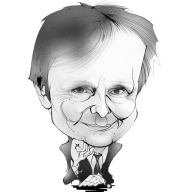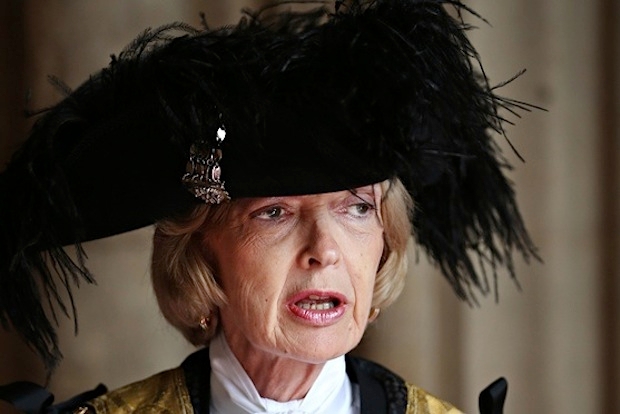Fiona Woolf, as you can probably tell from her Maggie-Smith-in-yet-another-costume-drama photograph above, is a member of The Establishment. She’s Lord Mayor of London. And a QC. Plus, she has been at the same social events as former home secretary Lord Brittan and his wife; is even sort of friends with Lady B, in common with hundreds of other well-connected people. That’s the thing about being of a certain age and professional eminence – you keep being introduced to each other and occasionally show up at the same dinner parties.
Take another example: Baroness Butler-Sloss. Her late brother, Lord Havers, was attorney general when Leon Brittan was in office. So you could say that she ‘moved in the same circles’ as the Brittans. Plus, she was our first female Lord Justice of Appeal. Establishment, you see.
The Government needs a top-flight lawyer to chair its inquiry into allegations of child abuse by politicians and other public figures. It nominated Elizabeth Butler-Sloss – but she was forced to step down because victims’ organisations were unhappy about her ‘connection’ with Lord Brittan, who is quite rightly being asked to explain why files relating to abuse apparently disappeared on his watch. Now Labour MPs, the Guardian and spokespeople for abuse survivors are waiting for a bus that they can throw Ms Woolf under.
In effect, the reputations of two devoted public servants are being demolished because they come from the wrong demographic – that of eminent lawyers. Like Butler-Sloss, Woolf is under pressure to admit that her ability to assess evidence on a matter of grave sensitivity is compromised by one or two strands in her social network. Should she do so, her gesture would be interpreted by suspicious commentators as an admission that she is part of the same conspiracy that hushed up child abuse because, you know, They All Are.
This mindset is an obstacle to uncovering the truth about child abuse and alleged paedophile networks. Can we, please, make a distinction between the following?
(a) A giant conspiracy by the Establishment to enable the sexual assault of children by covering up evidence that might incriminate its kiddie-fiddling members in the Palace of Westminster or the Garrick Club or wherever; and
(b) The paedophile crimes of members of the Establishment who used their social and political connections to hide their behaviour.
(a) is a conspiracy theory that, like the stories of byzantine networks of Satanists spread by ‘experts’ in the 1990s, will almost certainly fall apart on examination. I can understand why some victims of abuse might choose it as their starting point; I can also see its appeal to scaremongers with a political agenda. Either way, it rests on crude and credulous assumptions about how power operates in modern Britain.
In contrast, (b) is the sort of thing that happens under the radar and desperately needs to be exposed. Real cover-ups are messy affairs that never fit into the ancient template of the conspiracy theory. Disentangling evidence from rumour is not, with respect, the job of people whose lives have been wrecked by evil men. It requires the forensic skills of lawyers such as… well, the names Butler-Sloss and Woolf come to mind. If their integrity is trashed for no good reason then they, too, will number among the victims of these appalling scandals.







Comments